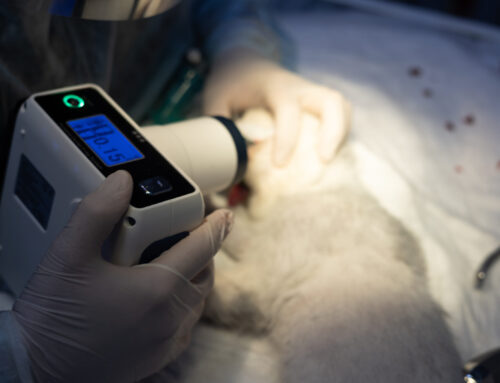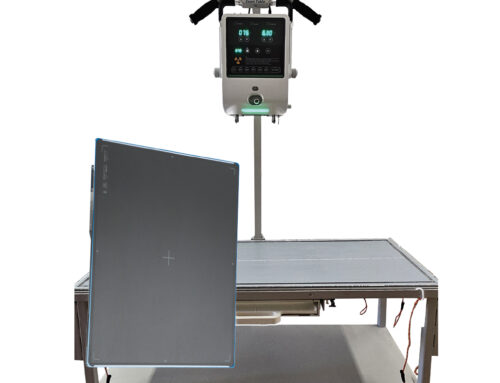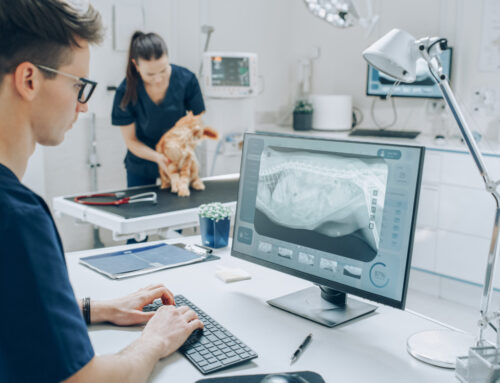This is the second and final installment of a two-part series outlining the pros and cons of feeding your dog a raw diet.
Tips For Feeding Your Dog A Raw Diet
Meat should make up between 50 and 70% of a raw food diet for dogs, within that figure it’s recommended that you should have a 1:1 ratio of bone to meat. That means that the smaller bones which have almost an equal amount of meat to bone, are better than a huge bone that only has a little bit of meat on it. The remainder of the nutrition comes from fresh, raw fruits and vegetables.
- Aim to feed somewhere between 2 and 3% of his body weight in raw food per day.
For example, a 50lb dog will eat approx. 1lb – 1.5lbs of raw food per day. Divide that amount between two meals, whenever possible. - When it comes to the type of fruit and vegetables to use in a raw food diet for dogs, do the research!
Some fruits/veggies can cause upset tummies, or worse – could cause canine bloat in large, deep-chested breeds. Some are actually toxic Here’s our short list of what we like and what we avoid:
Good:
Carrots, Parsley, Celery, Zucchini, Potatoes (WITHOUT skins), Cauliflower, Leafy Green Vegetables (Mustard Greens, Brussel Sprouts, Romaine Lettuce), Peas, Parsnips, Peanuts, Walnuts, Almonds, Strawberries, Blueberries, Apples, Bananas, Pears, Melons.
Bad (Some Potentially Toxic):
Onions, Garlic, Broccoli, Beans, Turnips, Cabbage, Grapes, Raisins, Macadamia Nuts, Tomatoes, Peppers, Cucumbers
Here are a few more tips and tricks…
- You need to supervise mealtimes when offering a raw food diet for dogs, at least during the early days. Raw dog food requires more effort (i.e. chewing and tearing) to eat, and an over-excited dog could gag or choke if not supervised at first
- NEVER FEED COOKED BONES as these can splinter and cause damage to your dogs’ digestive system
- If you want to feed a raw diet to your dogs, but are looking for a little less work–try prepared foods. There are dehydrated and/or frozen options available
- Grind up raw fruit and vegetables to help him get maximum benefits. Use a blender, food processor or juicer, and simply add the pulp or juice to food
- Worried that Rover isn’t getting all he needs? Add a daily vitamin/mineral supplement to his diet. Adding some dietary supplements such as Omega-3 Fatty Acids , Vitamin E, Vitamin C or probiotics ensures your dog gets all the essential nutrients he needs
- Mix up the menu by alternating the major meat ingredient every 3 – 4 days (i.e. feed lamb, then chicken, beef etc.) to prevent sensitivities. Organ meat (offal) is extremely rich; offer no more than once each week.
A Few Final Words…..
There are advocates on both sides of the raw/commercial debate. Whichever food plan you decide on (raw, commercial or home-made), the result should be a healthy and happy dog.
If Fido is ready for anything, has no digestive, immune or skin problems, keep doing what you are doing. You’ve found the best choice for you and your dog.
***
This blog is brought to you by Diagnostic Imaging Systems. Diagnostic Imaging Systems, Inc. (DIS) has been providing Quality Imaging products since 1983. The company combines industry knowledge with an understanding of the veterinary practice. For more information, go to Diagnostic Imaging Systems, Inc. website at: www.vetxray.com
All content provided on this blog is for informational purposes only. The owner of this blog makes no representations as to the accuracy or completeness of any information on this site or found by following any link on this site. The owner will not be liable for any errors or omissions in this information nor for the availability of this information. The owner will not be liable for any losses, injuries, or damages from the display or use of this information. These terms and conditions of use are subject to change at any time and without notice.






